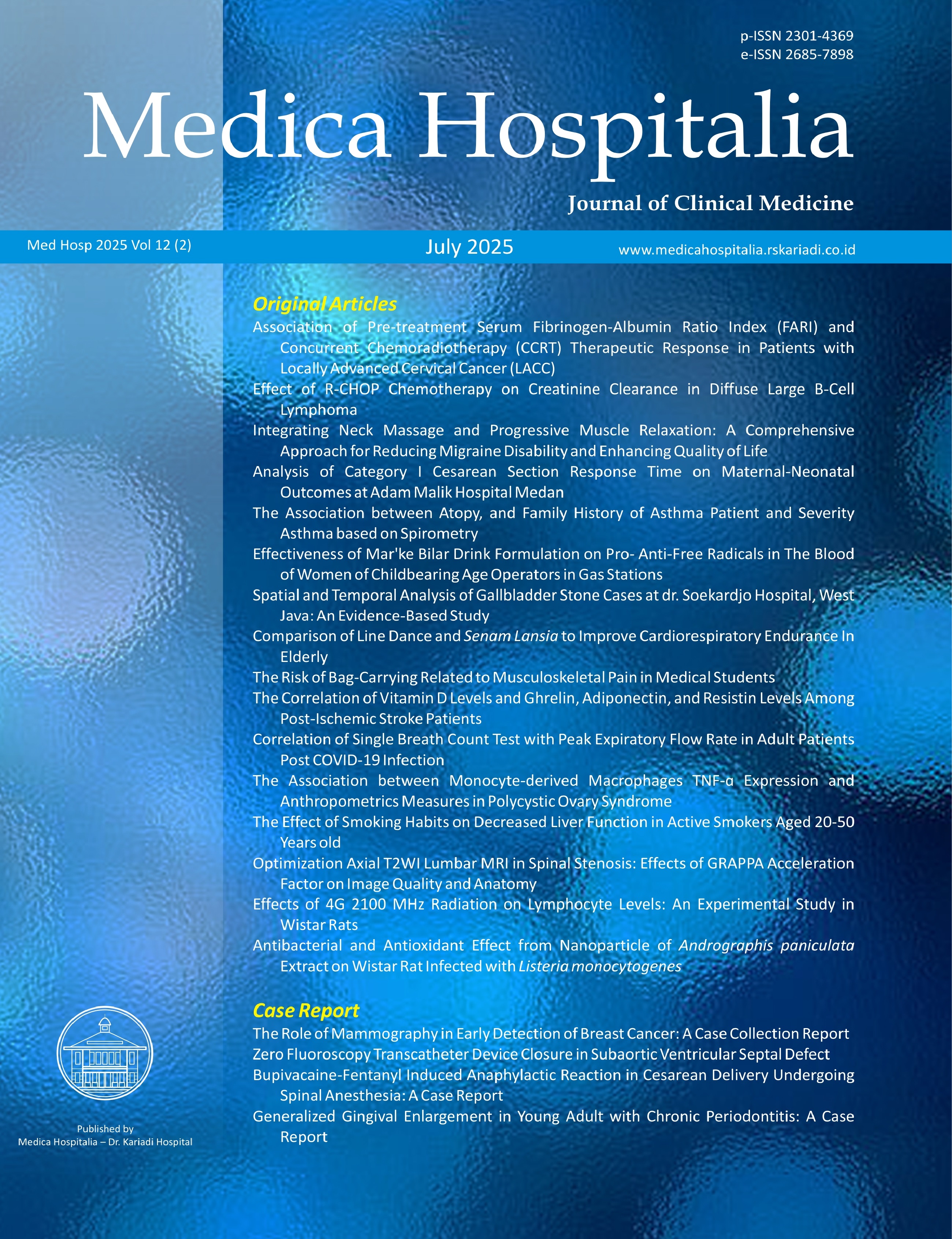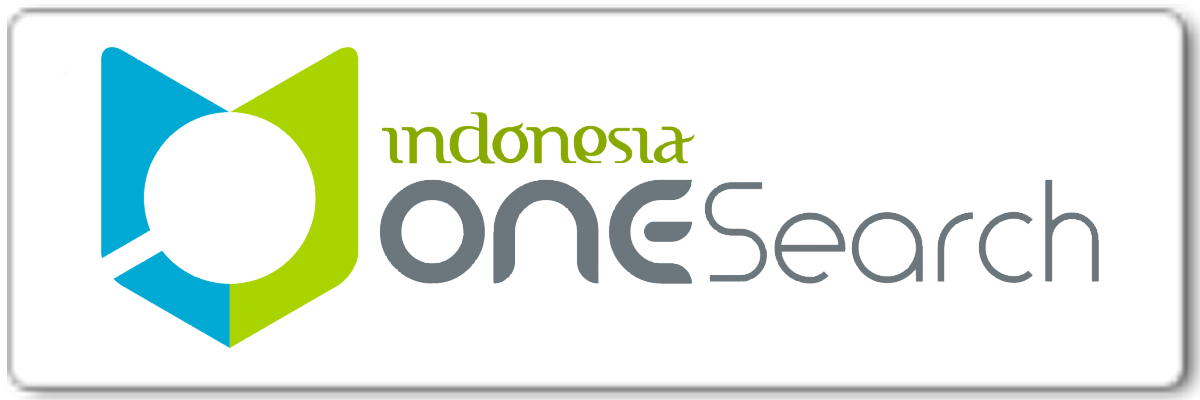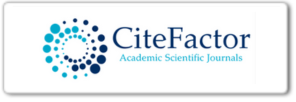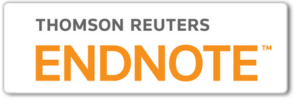Integrating Neck Massage and Progressive Muscle Relaxation: A Comprehensive Approach for Reducing Migraine Disability and Enhancing Quality of Life
DOI:
https://doi.org/10.36408/mhjcm.v12i2.1205Keywords:
Headache, Migraine, Neck Massage, Quality of LifeAbstract
BACKGROUND: Migraine is a highly disruptive and common neurological disorder characterized by intense headache and transient somatosensory and motor disturbances that affects approximately 1 billion people worldwide with many common causative factors and often results in disability and reduced quality of life. This study aims to determine the effect of combined neck massage and progressive muscle relaxation therapy on disability and quality of life of migraine sufferers.
METHOD: This quasi-experimental study used a pre-test-post-test control group design over eight weeks (May to July 2024), selecting 50 participants aged 18–60 years with migraines for over three months based on ICHD-3 criteria. The study utilized the Migraine Disability Assessment Questionnaire and the Migraine-Specific Quality of Life Questionnaire as instruments.
RESULT: The combination therapy of neck massage and progressive muscle relaxation both has a significant effect on reducing the severity, frequency, and duration of migraine attacks, as well as improving migraine-related disability (p =0.000) and quality of life (p-value = 0.001).
CONCLUSION: Combination therapy of neck massage and progressive muscle relaxation is effective in reducing migraine disability and improving the quality of life of migraine sufferers.
Downloads
References
1. Vos T, Abajobir AA, Abate KH, et al. Global, regional, and national incidence, prevalence, and years lived with disability for 328 diseases and injuries for 195 countries, 1990–2016: a systematic analysis for the Global Burden of Disease Study 2016. The Lancet. 2017;390(10100):1211-1259. doi:10.1016/S0140-6736(17)32154-2
2. El-Metwally A, Toivola P, AlAhmary K, et al. The Epidemiology of Migraine Headache in Arab Countries: A Systematic Review. The Scientific World Journal. 2020;2020:1-11. doi:10.1155/2020/4790254
3. Cooper W, Doty EG, Hochstetler H, Hake A, Martin V. The current state of acute treatment for migraine in adults in the United States. Postgrad Med. 2020;132(7):581-589. doi:10.1080/00325481.2020.1767402
4. Huang TC, Arshad Q, Kheradmand A. Focused Update on Migraine and Vertigo Comorbidity. Curr Pain Headache Rep. 2024;28(7):613-620. doi:10.1007/s11916-024-01256-0
5. Ul Ain Khan Q, Irshad A, Ghias S, et al. Assessing the Impact of Massage Therapy as a Physical Therapy Intervention for Migraine Relief: A Randomized Controlled Trial. http://xisdxjxsu.asia
6. Wells RE, Seng EK, Edwards RR, et al. Mindfulness in migraine: A narrative review. Expert Rev Neurother. 2020;20(3):207-225. doi:10.1080/14737175.2020.1715212
7. Lipton RB, Dodick DW, Ailani J, et al. Effect of Ubrogepant vs Placebo on Pain and the Most Bothersome Associated Symptom in the Acute Treatment of Migraine. JAMA. 2019;322(19):1887. doi:10.1001/jama.2019.16711
8. Buse DC, Murray S, Dumas PK, et al. Life With Migraine, Effect on Relationships, Career and Finances, and Overall Health and Well-Being: Results of the Chronic Migraine Epidemiology and Outcomes (CaMEO) Study (S59.002). Neurology. 2019;92(15_supplement). doi:10.1212/WNL.92.15_supplement.S59.002
9. Shaterian N, Shaterian N, Ghanaatpisheh A, et al. Botox (OnabotulinumtoxinA) for Treatment of Migraine Symptoms: A Systematic Review. Pain Res Manag. 2022;2022:1-15. doi:10.1155/2022/3284446
10. Steiner TJ, Stovner LJ, Jensen R, Uluduz D, Katsarava Z. Migraine remains second among the world’s causes of disability, and first among young women: findings from GBD2019. J Headache Pain. 2020;21(1):137. doi:10.1186/s10194-020-01208-0
11. Villar-Martinez MD, Goadsby PJ. Vestibular migraine: an update. Curr Opin Neurol. 2024;37(3):252-263. doi:10.1097/WCO.0000000000001257
12. Puledda F, Messina R, Goadsby PJ. An update on migraine: current understanding and future directions. J Neurol. 2017;264(9):2031-2039. doi:10.1007/s00415-017-8434-y
13. Sutherland HG, Griffiths LR. Genetics of Migraine: Insights into the Molecular Basis of Migraine Disorders. Headache: The Journal of Head and Face Pain. 2017;57(4):537-569. doi:10.1111/head.13053
14. Barus JFA, Sudharta H, Suswanti I, Sasmita P, Widyadharma IP, Turana Y. Comorbidities, social, and psychological factors associated with headache in adult Indonesians: data from the 5th Indonesian Family Life Survey (IFLS-5). Universa Medicina. 2024;43(2):148-156. doi:10.18051/UnivMed.2024.v43.148-156
15. Yin P, Anttila V, Siewert KM, Palotie A, Davey Smith G, Voight BF. Serum calcium and risk of migraine: a Mendelian randomization study. Hum Mol Genet. Published online December 26, 2016:ddw416. doi:10.1093/hmg/ddw416
16. Winarno ANS. Migraine headache in children: recent diagnosis and treatment. Jurnal Kedokteran dan Kesehatan Indonesia. 2019;10(2):185-196. doi:10.20885/jkki.vol10.iss2.art11
17. Viana M, Sances G, Ghiotto N, et al. Variability of the characteristics of a migraine attack within patients. Cephalalgia. 2016;36(9):825-830. doi:10.1177/0333102415613612
18. Kuruvilla DE, Mehta A, Ravishankar N, Cowan RP. A patient perspective of complementary and integrative medicine (CIM) for migraine treatment: a social media survey. BMC Complement Med Ther. 2021;21(1):58. doi:10.1186/s12906-021-03226-0
19. Ersoy S, Benli AR. Continue or stop applying wet cupping therapy (al-hijamah) in migraine headache:A randomized controlled trial. Complement Ther Clin Pract. 2020;38:101065. doi:10.1016/j.ctcp.2019.101065
20. Grazzi L, Sansone E, Raggi A, et al. Mindfulness and pharmacological prophylaxis after withdrawal from medication overuse in patients with Chronic Migraine: an effectiveness trial with a one-year follow-up. J Headache Pain. 2017;18(1):15. doi:10.1186/s10194-017-0728-z
21. Hsu Y, Chen C, Wu S, Chen K. Cold intervention for relieving migraine symptoms: A systematic review and meta‐analysis. J Clin Nurs. 2023;32(11-12):2455-2465. doi:10.1111/jocn.16368
22. Heidari Z, Shahrbanian S, Chiu C. Massage therapy as a complementary and alternative approach for people with multiple sclerosis: a systematic review. Disabil Rehabil. 2022;44(20):5758-5769. doi:10.1080/09638288.2021.1949051
23. Probyn K, Bowers H, Mistry D, et al. Non-pharmacological self-management for people living with migraine or tension-type headache: a systematic review including analysis of intervention components. BMJ Open. 2017;7(8):e016670. doi:10.1136/bmjopen-2017-016670
24. Hisham S, Manzour A, Fouad MM, Amin RM, Hatata HA, Marzouk D. Effectiveness of integrated education and relaxation program on migraine-related disability: a randomized controlled trial. Egyptian Journal of Neurology, Psychiatry and Neurosurgery. 2023;59(1). doi:10.1186/s41983-023-00745-0
25. Ailani J, Burch RC, Robbins MS. The American Headache Society Consensus Statement: Update on integrating new migraine treatments into clinical practice. Headache: The Journal of Head and Face Pain. 2021;61(7):1021-1039. doi:10.1111/head.14153
26. Pirthiraj A, Bhagwan R. The psychosocial impact of migraines on women and alternative therapies for migraine management. Health SA Gesondheid. 2023;28. doi:10.4102/hsag.v28i0.2249
27. Marshall A, Lindsay R, Clementi MA, Gelfand AA, Orr SL. Outpatient Approach to Resistant and Refractory Migraine in Children and Adolescents: a Narrative Review. Curr Neurol Neurosci Rep. 2022;22(10):611-624. doi:10.1007/s11910-022-01224-4
28. Fajriyah N, Trisnawuri S. The Effectiveness of Progressive Muscle Relaxation and Neuromuscular Taping on Ankle Brachial Index Values and Quality of Life in People With Type 2 Diabetes Mellitus. Critical Medical and Surgical Nursing Journal. 2023;12(1):25-32. doi:10.20473/cmsnj.v12i1.48840
29. Trisnawati I, Fajriyah N, Samudera WS. Pengaruh Progressive Muscle Relaxation Terhadap Respon Stres, Kadar Glukosa Darah, dan Kualitas Hidup pada Pasien Diabetes Melitus: A Systematic Review. Jurnal Penelitian Kesehatan “SUARA FORIKES” (Journal of Health Research “Forikes Voice”). 2020;11(4):357. doi:10.33846/sf11406
30. Liu K, Chen Y, Wu D, Lin R, Wang Z, Pan L. Effects of progressive muscle relaxation on anxiety and sleep quality in patients with COVID-19. Complement Ther Clin Pract. 2020;39:101132. doi:10.1016/j.ctcp.2020.101132
31. Verhaak AMS, Williamson A, Johnson A, et al. Migraine diagnosis and treatment: A knowledge and needs assessment of women’s healthcare providers. Headache: The Journal of Head and Face Pain. 2021;61(1):69-79. doi:10.1111/head.14027
32. Gewirtz A, Minen M. Adherence to Behavioral Therapy for Migraine: Knowledge to Date, Mechanisms for Assessing Adherence, and Methods for Improving Adherence. Curr Pain Headache Rep. 2019;23(1):3. doi:10.1007/s11916-019-0739-3
33. Moazami Goudarzi S, Ahmadi Talokolai Z, Vahidi Ghazvini N. The effectiveness of relaxation on quality of life and physical symptoms of military wives with migraine in Tehran. Psychology of Woman Journal. 2023;4(1):22-31. doi:10.61838/kman.pwj.4.1.3
34. Gupta DS, Kanase SB. Immediate Effect of Deep Neck Muscles Activation on Migraine Headaches in Students. Journal of Ecophysiology and Occupational Health. 2021;21(3):121. doi:10.18311/jeoh/2021/28394
35. Mehta JN, Parikh S, Desai SD, Solanki RC, G. Pathak A. Study of Additive Effect of Yoga and Physical Therapies to Standard Pharmacologic Treatment in Migraine. J Neurosci Rural Pract. 2021;12(01):060-066. doi:10.1055/s-0040-1718842
36. Cuadrado ML, Aledo-Serrano Á, Navarro P, et al. Short-term effects of greater occipital nerve blocks in chronic migraine: A double-blind, randomised, placebo-controlled clinical trial. Cephalalgia. 2017;37(9):864-872. doi:10.1177/0333102416655159
37. Meyer B, Keller A, Wöhlbier HG, Overath CH, Müller B, Kropp P. Progressive muscle relaxation reduces migraine frequency and normalizes amplitudes of contingent negative variation (CNV). J Headache Pain. 2016;17(1):37. doi:10.1186/s10194-016-0630-0
38. Spencer S, Sereda M, Bielińska M, et al. Effects of complex neck therapy – kinesiotherapy and interspinal muscles massage – on tinnitus. J Hear Sci. 2023;13(3):19-30. doi:10.17430/jhs/169069
39. Xiao CX, Lin YJ, Lin RQ, Liu AN, Zhong GQ, Lan CF. Effects of progressive muscle relaxation training on negative emotions and sleep quality in COVID-19 patients. Medicine. 2020;99(47):e23185. doi:10.1097/MD.0000000000023185
40. de Almeida Tolentino G, Lima Florencio L, Ferreira Pinheiro C, Dach F, Fernández-de-las-Peñas C, Bevilaqua-Grossi D. Effects of combining manual therapy, neck muscle exercises, and therapeutic pain neuroscience education in patients with migraine: a study protocol for a randomized clinical trial. BMC Neurol. 2021;21(1):249. doi:10.1186/s12883-021-02290-w
41. Hisham S, Manzour A, Fouad MM, Amin RM, Hatata HA, Marzouk D. Effectiveness of integrated education and relaxation program on migraine-related disability: a randomized controlled trial. Egyptian Journal of Neurology, Psychiatry and Neurosurgery. 2023;59(1). doi:10.1186/s41983-023-00745-0
Additional Files
Published
How to Cite
Issue
Section
Citation Check
License
Copyright (c) 2025 Novita Fajriyah, Rina Budi Kristiani, Sosilo Yobel (Author)

This work is licensed under a Creative Commons Attribution-ShareAlike 4.0 International License.
Copyrights Notice
Copyrights:
Researchers publishing manuscrips at Medica Hospitalis: Journal of Clinical Medicine agree with regulations as follow:
Copyrights of each article belong to researchers, and it is likewise the patent rights
Researchers admit that Medica Hospitalia: Journal of Clinical Medicine has the right of first publication
Researchers may submit manuscripts separately, manage non exclusive distribution of published manuscripts into other versions (such as: being sent to researchers’ institutional repository, publication in the books, etc), admitting that manuscripts have been firstly published at Medica Hospitalia: Journal of Clinical Medicine
License:
Medica Hospitalia: Journal of Clinical Medicine is disseminated based on provisions of Creative Common Attribution-Share Alike 4.0 Internasional It allows individuals to duplicate and disseminate manuscripts in any formats, to alter, compose and make derivatives of manuscripts for any purpose. You are not allowed to use manuscripts for commercial purposes. You should properly acknowledge, reference links, and state that alterations have been made. You can do so in proper ways, but it does not hint that the licensors support you or your usage.
























